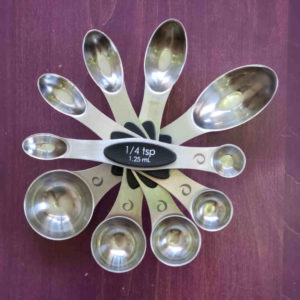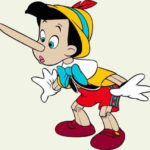The Anecdote
Bill Buford’s delightful account of culinary apprenticeship in Heat starts with him meeting celebrity chef Mario Batali at a dinner party. Bill talks his way into an unpaid kitchen slave position at Mario’s restaurant, Babbo. The whole book is a great read, but one passage is relevant to the topic of measurements. When he was a line cook, Bill witnessed the development of the Babbo restaurant cookbook. Food editors visited the restaurant, watched dishes being prepared, and recorded what they saw and transformed their observations into recipes. For the pasta dishes, pasta was the only thing that was precisely measured (four ounces). Everything else, largely due to the need for speed, was measured with the fingertips. “It’s either a small pinch or a large pinch or something in between.” But, some things were distorted by the food editors in translation from observation to recipe specification. “Do you really believe the Babbo cookbook when it tells you that a linguine with eels takes four garlic cloves, that a lobster spaghettini takes two, and that the chitarra takes three? No. It’s the same for each: a small pinch.”
I Get a Few Things from this Anecdote
First some things do need to be accurately measured. At home, baking recipes are the most common example in my experience. In the anecdote, the weight of the pasta is important. That’s all about consistency of portion size. In a restaurant, if a customer sees a big five-ounce bowl of pasta delivered to a table and then orders the same dish, they’ll be quite disappointed if they get served a three-ounce portion. Same thing if a repeat customer orders their favorite dish and it seems like it is small compared to the last time they ordered.
Second, sometimes precision isn’t so important. Big pinch, small pinch, something in between. Yes, all the cooks must be in the same ballpark when they perform fingertip measurements, but ballpark is good enough.
Third, this is hard evidence that recipes are guidelines, not gospel. Three dishes that, in the restaurant, use the exact same amount of garlic have very different amounts specified in the recipes in the book. Two, three or four cloves of garlic? What if my cloves seem really large or really small? Before you have much experience in the kitchen, it’s smart to follow recipes as best you can. But, as you gain experience, use that experience. There are “normal” amounts of garlic, and “large amounts” of garlic. Recognize the difference and mince up that amount without precisely counting the number of cloves that the recipe specifies. And after cooking, consider the results. Do you think more garlic would have been better? Less garlic? Make a mental note for the future. If you think the result could have been better, the problem may not have been with you. It may have been with the recipe!


